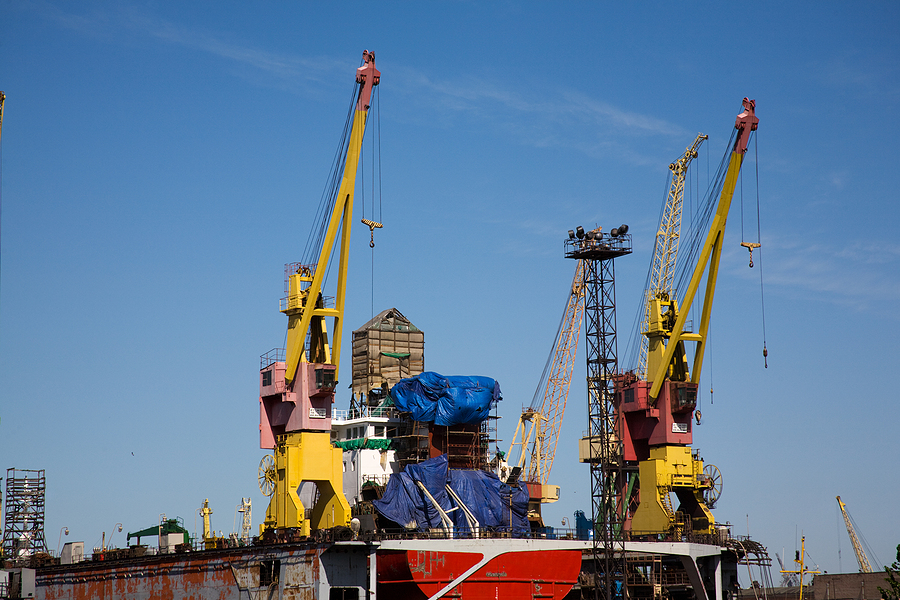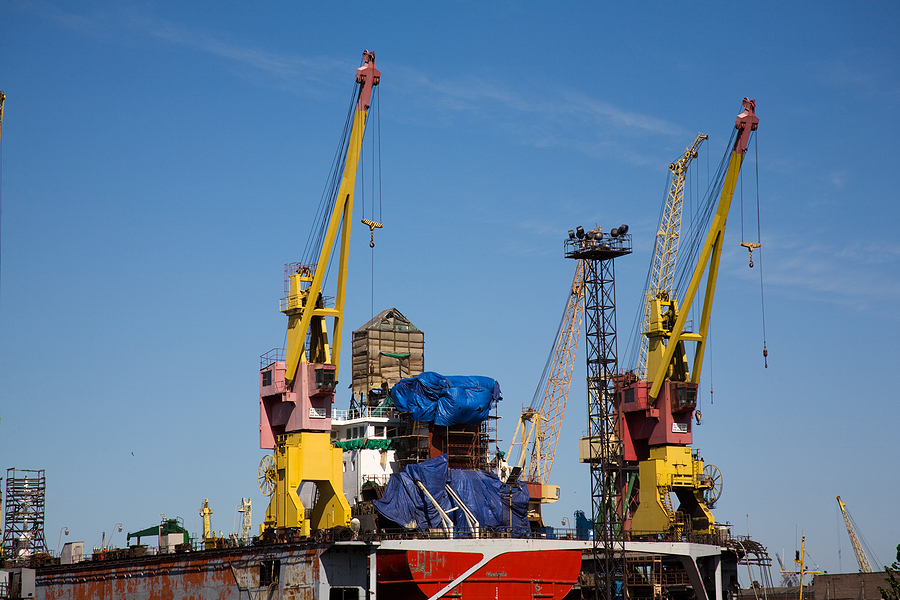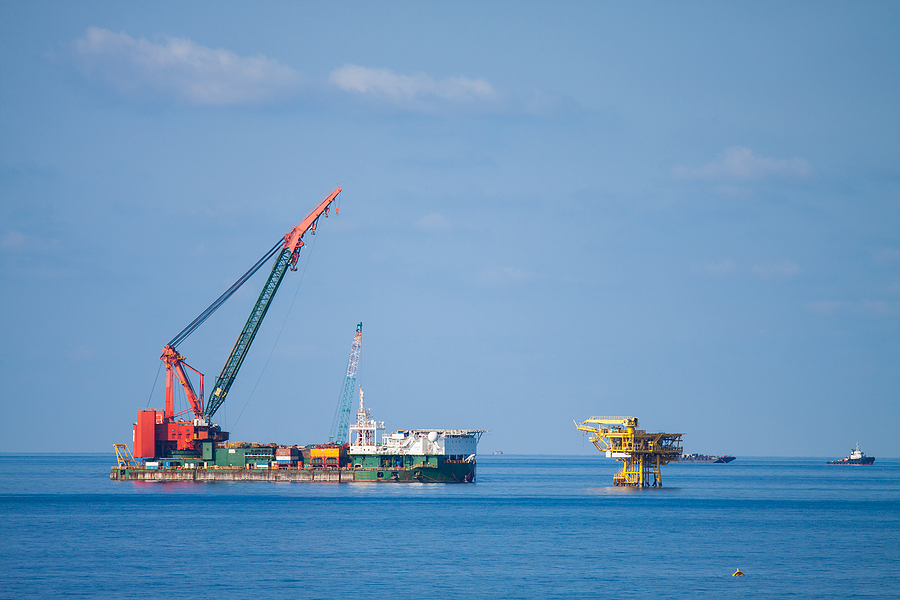Marine cranes, often referred to as marine cranes in shipbuilding or cranes used in ship construction, are pivotal assets in modern shipyards. From lifting massive hull sections to positioning intricate components, these cranes serve as the backbone of shipbuilding operations. Their precision, power, and versatility enable shipbuilders to construct vessels efficiently, safely, and at scale.
The Foundations: Types of Marine Cranes in Shipbuilding
Ship construction relies on a variety of crane types, each with a specialized purpose. Gantry and portal cranes are some of the most iconic, spanning over massive hull blocks to lift and align entire sections of a vessel. These cranes provide the backbone of modular shipbuilding, where separate blocks are fabricated and then joined together with seamless precision.
Hammerhead cranes, also known as cantilever cranes, are another long-standing feature in shipyards. They remain indispensable for installing heavy components such as armor plating, engines, or large machinery.
Floating crane vessels, including sheerlegs and revolving derrick barges, extend this capability beyond the dockyard. Their ability to lift and position prefabricated modules directly over the water increases flexibility and reduces the risks associated with transporting large sections by land.
Smaller deck-mounted cranes also play an important role, handling internal components and supporting localized lifting needs during both construction and outfitting stages.
Collectively, these different crane types ensure that every phase of shipbuilding, from hull assembly to final detailing, is supported by safe and effective lifting operations.
Strategic Role in the Shipbuilding Workflow
Marine cranes are deeply integrated into the workflow of modern ship construction. One of their most important functions is block lifting and alignment. With modular construction becoming the norm, cranes are essential for transporting large blocks from fabrication areas to assembly docks, then aligning them with millimeter-level precision. This accuracy reduces costly rework and accelerates project timelines.
Cranes are also central to the installation of critical components. Engines, propulsors, radar systems, and masts all require careful placement, and marine cranes make it possible to maneuver these pieces into tight, complex spaces safely. Floating crane vessels can even assist in launching completed hulls, lifting them directly into the water and eliminating the need for traditional ground transport.
Beyond initial construction, these machines also support maintenance and repair. When vessels undergo dry-docking or major overhauls, cranes are needed to remove worn equipment, lift replacement parts, and assist with structural modifications. In this way, marine cranes serve not only as construction tools but as ongoing assets throughout a ship’s lifecycle.
Safety, Regulations, and Certified Operations
Safety is paramount in shipbuilding, particularly when dealing with equipment that routinely lifts hundreds or even thousands of tonnes. In the United States, crane operations are regulated under strict guidelines established by OSHA.
For example, mobile cranes mounted on barges—often used in shipyard construction—must undergo extensive examinations before being placed into service, followed by annual inspections and comprehensive testing every four years. These requirements, outlined in 29 CFR Part 1919, ensure that cranes meet the highest standards of safety and reliability before entering demanding marine environments.
Such regulations reflect the high stakes of crane operations. A failure during a heavy lift could endanger workers, damage costly equipment, or set back entire shipbuilding schedules. Certified inspections, operator training, and proper load testing all contribute to minimizing these risks while preserving the efficiency of the shipyard.
Historical Evolution and Notable Examples
The role of marine cranes in shipbuilding has evolved dramatically over the centuries. In the late seventeenth century, before purpose-built cranes became standard, shipyards relied on “sheer hulks”—floating timbered vessels equipped with simple lifting rigs designed to raise and install masts. These were crude by modern standards but marked the beginning of specialized marine lifting technology.
By the industrial era, cranes had grown significantly in size and complexity. One of the most famous examples is the pair of gantry cranes known as Samson and Goliath at Belfast’s Harland and Wolff shipyard. Towering at 106 and 96 meters, these structures can lift up to 840 tonnes each and nearly 1,700 tonnes when combined. They symbolize not just engineering prowess but also the scale of modern shipbuilding, where entire sections of a vessel must be lifted and fitted with unparalleled precision.
Modern Heavy-Lift Solutions: Crane Vessels and Sheerlegs
Today’s shipbuilding industry often demands even greater lifting capacity, particularly for offshore or specialized vessels. Floating sheerlegs and crane barges have emerged as indispensable tools in this regard. These platforms can provide lifting capacities ranging from 50 tonnes to an astonishing 20,000 tonnes, making them suitable for the heaviest and most complex components.
Economic and Operational Advantages
The integration of marine cranes into shipbuilding delivers clear economic and operational benefits. The use of modular construction combined with heavy-lift capabilities allows projects to move faster, reducing overall build times. By consolidating lifting operations into fewer, more powerful machines, shipyards can also lower costs associated with multiple staged installations.
From a safety perspective, advanced cranes equipped with stabilization systems, dynamic positioning, and motion compensation further reduce risks during lifting operations. Their flexibility adds to this advantage. A floating crane, for example, can be deployed at different sites, meaning one asset can serve multiple projects across a wide region. Ultimately, cranes not only improve productivity but also make modern shipbuilding more cost-effective and secure.
According to Washington State’s Department of Labor & Industries, there are currently 732 maritime cranes certified under the state’s Maritime Crane Program. This program enforces rigorous inspection and certification requirements for cranes operating in waterfront shipyard environments. The number highlights both the widespread reliance on cranes in marine industries and the level of regulatory oversight necessary to keep operations safe and efficient.
Key Takeaways
Marine cranes are far more than mechanical lifters; they are the enablers of modern shipbuilding itself. From the early days of sheer hulks to the massive floating crane vessels of today, these machines have grown in scale and sophistication to match the needs of an evolving industry. Their role spans every stage of a vessel’s life, from block construction to component installation, launching, and repair.
With safety regulations ensuring reliable operation and modern technology pushing lifting capacities to unprecedented levels, marine cranes remain indispensable in both traditional shipyards and cutting-edge offshore projects. Their economic, operational, and safety benefits continue to make them one of the most valuable assets in maritime construction.
If your shipyard or marine project requires dependable, expertly designed cranes, you need a partner that understands the unique demands of shipbuilding. DMW Marine Group specializes in providing high-quality knuckle boom, telescopic boom, stiff-boom, and jib marine cranes built for heavy-duty performance.
Looking for reliable marine cranes in shipbuilding? Reach out today and see how DMW Marine Group can support your next project.




